- Home
- Conn Iggulden
The Dangerous Book of Heroes Page 2
The Dangerous Book of Heroes Read online
Page 2
By the Monongahela River, Braddock and the forward half of the army were ambushed and routed by a combined Native American and French army. Braddock’s bravery is under no question; he had five horses shot beneath him before he was mortally wounded. Washington lost two horses, while forced to ride with a pillow on his saddle because he was suffering from dysentery. The Virginian militia fled back across the river, while the British soldiers made a stand.
It was not French soldiers but the Native Americans shooting from behind trees, logs, and rocks that defeated them. “If we saw of them five or six at one time [it] was a great sight,” one British soldier wryly commented. Some two-thirds of those soldiers were killed or wounded before Braddock was shot. The remainder then retreated and reassembled at the wagons.
Washington expressed no criticism of Braddock, saying, “How little does the World consider the Circumstances, and how apt are mankind to level their vindictive Censures against the unfortunate Chief, who perhaps merited least of the blame.” He was perhaps criticizing the Virginians; they were the men best suited to combat the Native American style of attack. Yet they had retreated while the British soldiers stood and fought a battle for which they had not been trained. Perhaps he was also acknowledging that his proposal to split the army was wrong.
The western frontiers of the colonies were now exposed to increasing Native American attacks. The Virginia assembly restored Washington his commission and placed him in overall command of the colony’s militia. He was charged with training men to defend the western frontier. With a minimal volunteer force, minimal financial support, and equally minimal supplies, he parried the enemies’ incursions for the next three years. There were desertions and insubordination, which he punished by hanging and flogging, but Washington was learning the soldier’s art.
The world war continued. General Wolfe’s victory at Quebec, the capture of Montreal, and victories by the Royal Navy as far away as Quiberon Bay and Lagos turned the tide for eventual defeat of the French.
In the French and Indian War, the British—and especially Braddock’s replacement, Brigadier General John Forbes—understood that Native American friendship and alliances were necessary for a speedy victory. More important, their friendship and alliances were vital to win the peace for the colonies afterward. One after the other, most of the Native American nations turned to support Britain. The basis of negotiation was what they’d desired at the beginning of the war—that the British would trade with them but would not invade and settle their territories west of the Appalachian Mountains.
In November, just before winter, General Forbes made a forty-mile advance to the Forks of the Ohio in a surprise campaign. On the fifteenth, using Colonel Washington’s Virginians and militia from the Carolinas, Delaware, and Maryland, Forbes marched his small force west from Loyalhanna, Pennsylvania. Washington wanted to use the old trail once more, but Forbes blazed a new road, which could be used again to resupply the Ohio country. Forbes himself was actually dying and was carried by litter.
The force was ten miles from Fort Duquesne when the French abandoned and destroyed it. Forbes quickly built a new fort, Fort Pitt (Pittsburgh), garrisoned it with Pennsylvanian militia for the winter, and secured peace with the local Delaware chiefs. He was carried back to Philadelphia but died six weeks later. The other militia dispersed, their terms of service expired, while Washington resigned again with the honorary rank of brigadier general.
He returned to Mount Vernon in early 1759, dissatisfied that he had not secured a permanent commission in the British army. Whether he was qualified to become a regular soldier is one matter. The more important matter is that from his experience with the British, in particular serving under General Forbes, he had absorbed the vital fact about how to conduct and win a war in the terrain of North America.
Copyright © 2009 by Matt Haley
He wrote at the time: “Suppose the Enemy gives us a meeting in the Field and we put them to the Rout. What do we gain by it? perhaps triple their loss of Men in the first place, tho our numbers may be greatly superior (and If I may be allowd to judge from what I have seen of late, we shall not highten much that good opinion they seem to have of our skill in woods fighting)—therefore to risk an Engagement when so much depends upon it, without having accomplishment of the main point of view, appears in my Eye, to be a little Imprudent.”
In other words, winning battles in a wilderness war does not win the war if the enemy disperses, regroups, and returns to strike back elsewhere. British commanders soon forgot this tactic, for they were not required to use it again. The British army considered the North American campaign of the Seven Years’ War a unique experience it would never meet again. After all, the Canadian colonies and the American colonies were British.
In January 1759, George Washington married Martha Custis, a widow he had met the year before. She brought to the marriage two children, seventeen thousand acres, twenty-three thousand pounds, and some fifty slaves. Although the war continued until eventual British victory in 1763, Washington remained at Mount Vernon to farm and manage his wife’s estates. For his war services he was granted land in present-day West Virginia.
Unlike the Native Americans in the south, the nations in the north and in Canada had continued to support the French until defeat in 1763. Led by Chief Pontiac of the Ottawa and others, these nations rebelled in a further combined effort to prevent the loss of any more of their land. From this conflict comes the story that General Amherst gave blankets used by smallpox patients as gifts to Native Americans, in a deliberate attempt to infect them. However, smallpox was then endemic in North America, as it was in Europe and Britain, and the cause and transmission of the disease was not known.
In a response to Pontiac’s rebellion and the southern negotiations, the Royal Proclamation of October 1763 banned further British settlement or purchase of Native American territory, effectively the land west of the Appalachian Mountains. Many colonialists were unhappy with these terms.
George Washington, meanwhile, lived the life of an English gentleman farmer, which was exactly what he was. He rode to hounds, watched cockfights, bred horses and livestock, took snuff, smoked a pipe, drank punch and Madeira wine, played billiards, and gambled at cards. He patronized the theater, concerts, and balls when in town, ordered his clothes from London, and hosted house parties, picnics, and barbecues at an extended Mount Vernon. In turn, he and Martha were invited to visit other influential Virginian plantations. He bought more and yet more land and employed thirteen house servants to look after his mansion.
To pay for it all, he exported tobacco to the free-market London tobacco exchange. His leaf, though, was still only mediocre. Like many others living an expansive lifestyle, he found himself accruing debt as tobacco prices fell in the postwar economic depression. Thomas Jefferson was another of the plantation owners who indebted themselves, from the falling value of their crop and by living beyond their means. Washington decided to diversify.
He replaced much of his tobacco with wheat and, by using and letting his own mill, smithy, kilns, and cider presses, tried to make the combined estates self-sufficient. His overseers were instructed to “buy nothing you can make yourselves.” He even expanded into coastal fishing, salting the catch for sale and for food for his slaves. Despite all this, it was only the inheritance from his stepdaughter’s death in 1773 that allowed him to clear his debts.
By 1775 he had doubled the size of Mount Vernon to sixty-five hundred acres and had more than a hundred slaves. Yet Washington still coveted the Native American territories west of the Appalachians, the lands he had visited and admired as a surveyor and soldier. Like many colonials he resented the 1763 proclamation, despite the 1768 and 1771 modifications in which Native American chiefs conceded settlement along the Ohio Valley from Fort Pitt to the Kentucky River.
Washington confided to a business associate: “I can never look upon that Proclamation in any other light (but I say this between ourselves) than as a temporar
y expedient to quiet the minds of the Indians.” He was a member of both the Ohio and the Mississippi Companies investing in this territory. More land meant more wealth through crops, speculation, mortgages, and credit.
As a result of the Seven Years’ War the British government had the largest national debt in its history, £146 million. It had secured North America and the Caribbean from French control, as well as a lasting peace with Native Americans. That three-year conflict had been fought from Niagara to Virginia solely by the British army, with only four of the thirteen colonies assisting in a minor way. Parliament thought that the colonies should pay a share of the cost of these wars, which, after all, had been started by the massacre at Jumonville’s Glen. At the time, those in Britain liable to taxation were levied an average of eighteen pounds a year, those in the colonies, eighteen shillings a year.
Acts authorizing taxes such as the stamp tax, the quartering tax, and tea tax were introduced. Some were repealed after protest, but all led to discontent. “No taxation without representation” was the catchphrase. It’s true that there was little direct representation in Parliament, but each colony had had its own legislature and elections for more than 100 years—some for more than 150 years—and conducted its own affairs.
Despite the protests and anger, it wasn’t taxation that led to war. That was an argument put forward afterward by France. If that had been the cause, the Canadian colonies with their stronger French background would also have joined the thirteen colonies’ move for independence. As the radical Thomas Paine explained, taxation was merely the spark that ignited the fire.
The root cause of the Revolutionary War was land. After the French had been kicked out, there was no threat at all to the American colonies. Therefore, the colonialists argued, there was no need for a British garrison. Without a British garrison, the colonialists would be free to expand westward across the Appalachians, across the 1763 proclamation border, into Native American territory.
Western expansion had never been a goal of the British government—it had enough empire elsewhere—but it had become of major importance to the colonial governments. During the 175 years of British settlement the concept had entered the psyche of the thirteen colonies. It remained so for a further hundred years, until all the western American nations had been conquered.
If the British parliament would not support or allow the colonies’ expansion, the colonies would go it alone. In fact, their militias could handle resistance by Native American warriors better than the British regulars. And triggered by the Age of Enlightenment, English-speaking peoples everywhere were demanding more independence.
George Washington and Ben Franklin were pro-British, against independence, and hoped that war with Britain—civil war—would not happen. Yet if it did, both saw their allegiance being to the colonies and acted accordingly. Franklin, in fact, had earlier proposed a federated government of the mainland American colonies, responsible for local defense, frontiers, and Indian affairs, under British rule. Parliament had not been hostile to the idea, but none of the colonial governments had shown any interest whatsoever and it had lapsed. So, as in most wars, step by small step the factions differed, separated, and became opposed to the point of confrontation.
In December 1773, consignments of East India Company tea were thrown overboard from ships in Boston Harbor; in 1774 Britain temporarily closed the port. A meeting of the colonies was called, the First Continental Congress, and trade sanctions were imposed against British goods. On April 19, 1775, Massachusetts minutemen made a surprise attack on small British garrisons at Lexington and Concord. Rebellion was spoken of openly.
At the Second Continental Congress held that May, Washington was elected, although not unanimously, to command the combined militia of the colonies. He was reluctant, had himself recommended General Lewis for the command, and said: “I beg it may be remembered that I…do not think myself equal to the command I am honored with.” Yet he was seen as the man, perhaps the only man, who could unite the patriots throughout the thirteen colonies. He took command of the forces outside Boston and, that June, defeated Britain at the battle of Bunker Hill.
It was an extraordinarily dangerous appointment for Washington to accept. Looking back, with the outcome known, we see it as just another step in history. Yet at the time, like Oliver Cromwell 136 years earlier, Washington made a decision that was literally traitorous. He was leading an armed insurrection against the democratically elected parliament and its king; there would be a rope around his neck if he was captured. Further, the elected legislatures of the thirteen colonies were divided about a rebellion; there was no consensus. About half the colonialists were ambivalently neutral, with the remainder equally split between Loyalists and patriots. Even Parliament was divided, as were families in both America and Britain. So began the American Revolutionary War.
Elsewhere, it’s more accurately called the American War of Independence, for this was no revolution. It was a straight fight for independence from a controlling power. The eventual federal government, with its two houses of Congress and an elected president, was very similar to the British constitutional government, with its two houses of Parliament and elected prime minister. In January 1776, Thomas Paine published his influential propaganda pamphlet Common Sense. A phenomenal 120,000 copies were distributed throughout the colonies and Britain.
In Charlestown, meanwhile, General Howe’s winter quarters were an indefensible position. As soon as Washington placed cannon on Dorchester Heights in March, Howe was forced to leave by sea. Washington then hurried overland to invade and fortify New York, while in July the colonies made the Declaration of Independence at Philadelphia. In August, Howe’s army arrived at New York by sea and, in a succession of clever land and sea maneuvers, defeated Washington’s army. Howe pursued it south through New Jersey. By winter, he had forced Washington across the Delaware River into Pennsylvania. Nearly ten thousand patriots were wounded, killed, or captured, while many more men deserted.
It was then that Washington recalled the lessons learned in the earlier French and Indian War. His patriot army could never meet and ultimately defeat British armies on a traditional battlefield. Instead, it had to fight as the British and the militia had fought against the French: a small victory here, a small victory there, even a small defeat, then withdrawal to regroup and attack again elsewhere. In that way, he would wear down Britain’s resolve, politically and militarily. This is exactly what Washington ordered for most of the next six years, beginning that Christmas night.
Conducting a standard war, Howe had gone into winter quarters, leaving two outposts near the Delaware at Trenton and Burlington. Washington and his men crossed the icy river in darkness and attacked the mercenary Hessian regiment at Trenton, forcing its surrender. In response, General Cornwallis quickly advanced to trap Washington at Trenton and retake the post. The wind shifted into the north, the impassable bog roads around Trenton froze, and Washington was able to escape by night. He marched around to attack the Princeton garrison, putting the British detachment there to flight before withdrawing again, to New Jersey.
He had found the way to win the war. He wrote to Congress: “We should on all Occasions avoid a general Action, or put anything to the Risque, unless compelled by a necessity, into which we ought never to be drawn.” Not everyone agreed and Washington was persuaded at times to return to more traditional tactics.
A patriot army invaded Canada in late 1776 in an attempt to destabilize the loyal colonies. It was defeated by General Carleton near Quebec on the last day of the year. Although outnumbered, General Burgoyne advanced south into New York Colony in 1777, hoping to take the patriots by surprise. However, he lost minor actions at Freeman’s Farm and Bemis Heights, to surrender to General Gates at the battle of Saratoga. Farther south in Pennsylvania, Washington was defeated later that year by Howe at Brandywine Creek and Germantown, with the subsequent loss of Philadelphia.
Behind the scenes, Washington’s command was also thre
atened. A congressional plot to dismiss him, led by an Irish adventurer named Conway, was defeated. At his Valley Forge winter quarters in Pennsylvania, Washington lost a quarter of his ten thousand men to disease and starvation. A doctor recorded in his diary: “Poor food, hard lodging, cold weather, fatigue, nasty clothes, nasty cookery, vomit half my time, smoked out of my senses, the devil’s in it, I can’t endure it.”
Benjamin Franklin, meanwhile, had lobbied France to enter this civil war in support of the patriots. That a decadent monarchy should send arms, ammunition, soldiers, and ships to support a republican rebellion, while viciously suppressing its own republicans and liberty at home, has its own irony. Such was France’s enmity toward Britain. A French rear admiral who fought with the loyalists was guillotined in Paris during the later Reign of Terror.
General Sir Henry Clinton replaced Howe and changed Britain’s strategy. He saw that holding patriot centers such as Philadelphia was not effective; Congress simply left to reassemble elsewhere. Somehow General Washington’s forces had to be defeated in the field. So Clinton left Philadelphia, made a single British stronghold of New York, and sent General Cornwallis to recapture the southern colonies lost by an earlier tactic. Although slavery had been constitutionally illegal in Great Britain since the 1580s, it was not in its colonies. So when Governor Murray had offered freedom to any slave—black or white—who fought for Britain, he had pushed the lukewarm southern Loyalists into the patriot camp.

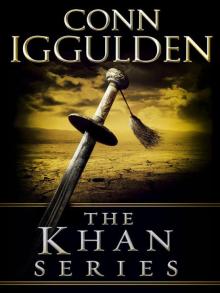 The Khan Series 5-Book Bundle
The Khan Series 5-Book Bundle Tollins 2: Dynamite Tales
Tollins 2: Dynamite Tales Tollins: Explosive Tales for Children
Tollins: Explosive Tales for Children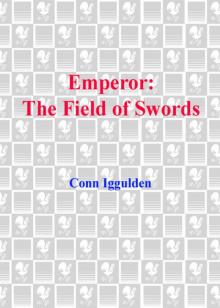 The Field of Swords
The Field of Swords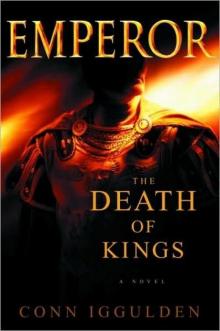 The Death of Kings
The Death of Kings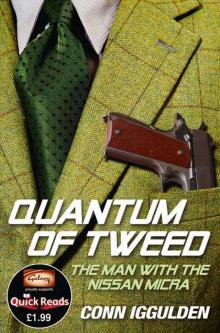 Quantum of Tweed: The Man With the Nissan Micra
Quantum of Tweed: The Man With the Nissan Micra Bones of the Hills
Bones of the Hills Genghis: Birth of an Empire
Genghis: Birth of an Empire The Gates of Rome
The Gates of Rome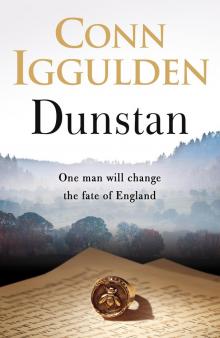 Dunstan
Dunstan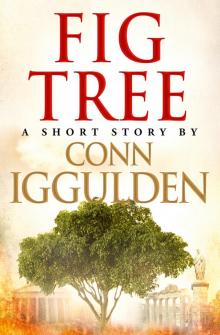 Fig Tree
Fig Tree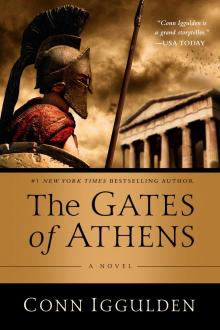 The Gates of Athens
The Gates of Athens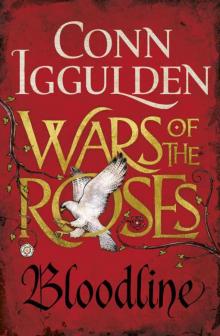 Stormbird
Stormbird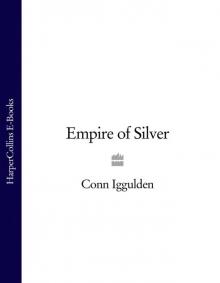 Khan: Empire of Silver
Khan: Empire of Silver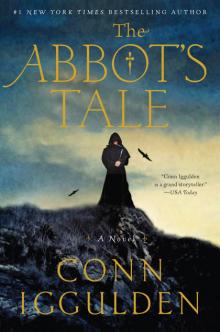 The Abbot's Tale
The Abbot's Tale Gengis: Lords of the Bow
Gengis: Lords of the Bow The Gods of War
The Gods of War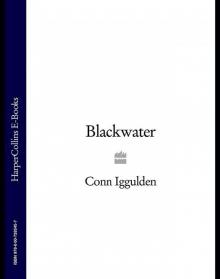 Blackwater
Blackwater Ravenspur: Rise of the Tudors
Ravenspur: Rise of the Tudors Wars of the Roses: Trinity (War of the Roses Book 2)
Wars of the Roses: Trinity (War of the Roses Book 2)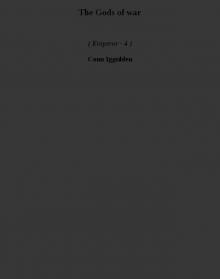 The Gods of war e-4
The Gods of war e-4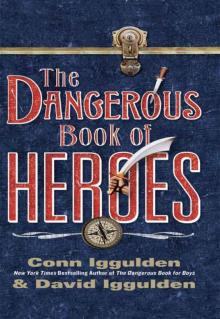 The Dangerous Book of Heroes
The Dangerous Book of Heroes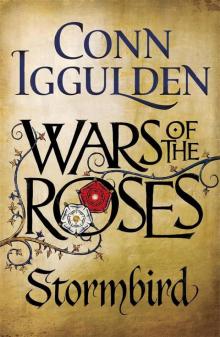 Stormbird wotr-1
Stormbird wotr-1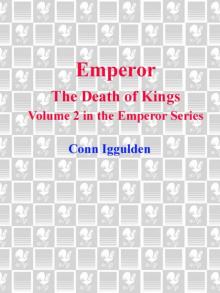 Emperor: The Death of Kings
Emperor: The Death of Kings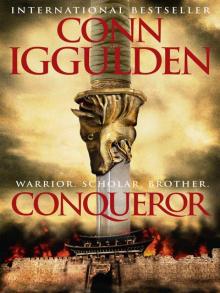 Conqueror (2011) c-5
Conqueror (2011) c-5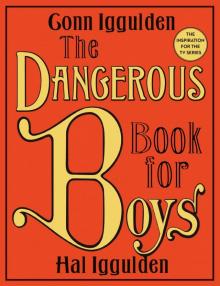 The Dangerous Book for Boys
The Dangerous Book for Boys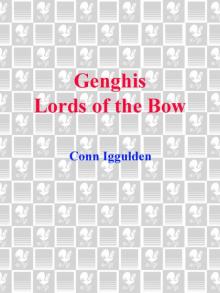 Genghis Lords of the Bow
Genghis Lords of the Bow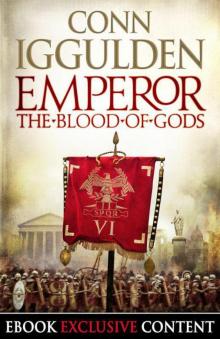 Emperor: The Blood of Gods (Special Edition) (Emperor Series, Book 5)
Emperor: The Blood of Gods (Special Edition) (Emperor Series, Book 5)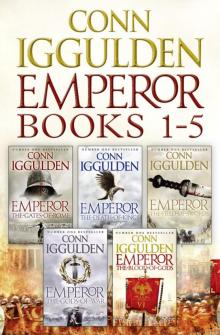 The Emperor Series: Books 1-5
The Emperor Series: Books 1-5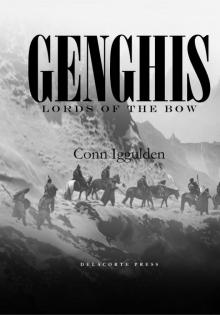 Lords of the Bow c-2
Lords of the Bow c-2 Lords of the Bow
Lords of the Bow Quantum of Tweed
Quantum of Tweed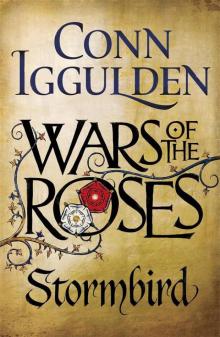 Wars of the Roses 01 - Stormbird
Wars of the Roses 01 - Stormbird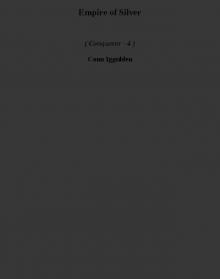 Empire of Silver c-4
Empire of Silver c-4 Birth of an Empire
Birth of an Empire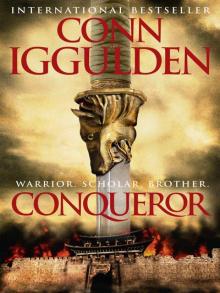 Conqueror (2011)
Conqueror (2011)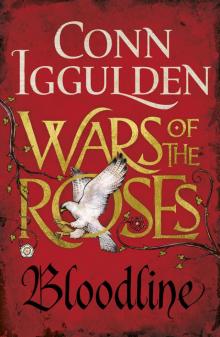 Wars of the Roses: Bloodline: Book 3 (The Wars of the Roses)
Wars of the Roses: Bloodline: Book 3 (The Wars of the Roses) Bones Of the Hills c-3
Bones Of the Hills c-3 Empire of Silver
Empire of Silver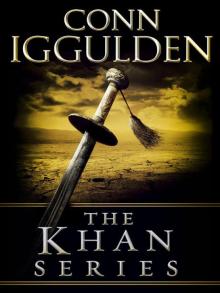 The Khan Series 5-Book Bundle: Genghis: Birth of an Empire, Genghis: Bones of the Hills, Genghis: Lords of the Bow, Khan: Empire of Silver, Conqueror
The Khan Series 5-Book Bundle: Genghis: Birth of an Empire, Genghis: Bones of the Hills, Genghis: Lords of the Bow, Khan: Empire of Silver, Conqueror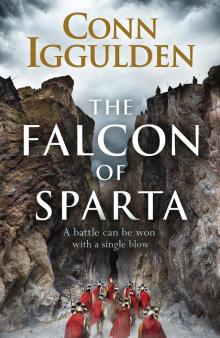 The Falcon of Sparta
The Falcon of Sparta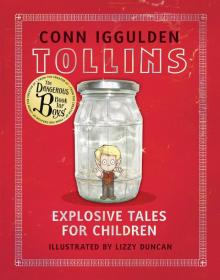 Explosive Tales for Children
Explosive Tales for Children